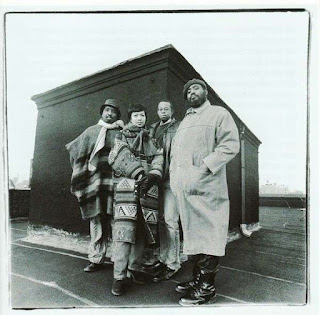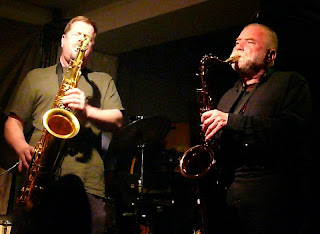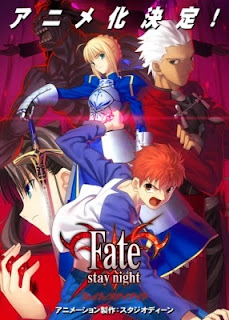I initially saw this album written about in a New York Times piece. I read it and immediately ordered the album online. Where else but Amazon.com. A bit overpriced but its a quick and easy way for me to get my jazz albums. I was super hyped about this album because I love the Bad Plus and Joshua Redman. I actually listened to this album earlier today and didn't really think much of it. Let's see if that's changed the second time around. Lets get started on the musical discourse!
The album opens with 'As This Moment Slips Away', a melancholy number that actually feels like time is slipping away as the music continues on. By that I mean, the music has a meandering quality to it, but in a good way, with Redman's saxophone leading the way while the piano colours the piece with lush chords. At some point near the end of the piece, a new motif is established to the already accepted riff. It kind of reminds me of Joe Henderson at times, because of the chord changes and the way the saxophone is weaving in and out of the melody with the piano.
The next tune is called 'Beauty Has It Hard', a great title for a tune. This one is a another kind of melancholy number. By that I mean to say that the melody, rhythm, and harmonic structure is at a similar tempo to the first one, even though it isn't the same tune. The saxophone has more of a free-wheeling part in this tune, with some honks here and there, and some chromatic type runs going up and down the register. After a while in this piece, another new motif is added, almost like a song within a song. It's a beautiful melody man. At the end, there's a big buildup to this beautiful melody, with the piano crushing these great chord voicings, with Redman's saxophone ending on a high note.
'County Seat' opens like a kind of traditional straight-ahead jazz tune. There's an established head, that is very quick and bebop-like, then it enters a piano thang, with Iverson showing off more of his technical solo ability. Then Redman's sax comes in like a straight-ahead saxophone colossus, then going into a bluesy thing, maybe like a blues hoe down that sounds jazzy? It reminds me of Sonny Rollins.
'The Mending' starts off as a kind of piano ballad, much like straight-ahead jazz stuff. It has a kind of bluesy vibe to it. Redman's saxophone sings sweetly over the ballad chord voicings of Iverson's piano. Anderson's bass lines are especially great here, as he really stretches out playing interesting bass lines, rather than just playing up on the piano chords.
'Dirty Blonde' starts off as something very Bad Plus-like. In fact, I believe it was an old tune from a previous Bad Plus album that they reused here. Whereas the other tunes here were all written for this album, other than this one and the last tune, 'Silence is the Question'. By Bad Plus-like, it sounds like a piece written for just the three of them as a trio, and they just added saxophone to it just for this album. A lot is happening in this tune and there are chord changes galore. What is astounding is the fact that they manage to keep it all together without sounding free-jazz, which would've been cool in my opinion. It's definitely way different from the other pieces before it. It's a much more complicated piece, and there are moments where it is very free, but not necessarily free-jazz.
'Faith Through Error' starts off as a kind of Ornette Coleman type thing, with everyone playing their own kind of random thing. I know its not random but this is the most free-jazz they get on the album thus far. It is, as my old white guitar playing friend from this old band called Lightning says, 'out there'. He also says 'they're wacked old black dudes'. This is their big free piece and it goes into a short drum solo that is more tasteful than showy. It was super quick though, wish it could've lasted longer, as King is a great jazz percussionist.
'Lack The Faith But Not The Wine' is a more laid back tune with a slow melody. This tune has a nice bass part especially, it seems on the slower more ballad stuff the bass really shines. The tone of the saxophone here seems changed, like he used a different mouthpiece or different horn to get that particular tone. Because it sounds more like an older saxophone tone, more of a somber tonal colour. This is probably the most 'relaxing' piece on the album because its just so chill the whole way through without any surprises.
"Friend Or Foe' has a freewheeling kind of arrangement. Like progressive jazz, which it pretty much is. There is a established theme and motif coming and going, but then there are all these chromatic runs, and then this kind of bass vamp, that is particularly rhythmic with the drums and the bass. When the smoke clears, Redman's sax plays this melody that sounds like it came straight out of the 90s jazz scene when he was a young man just making it big in the jazz world. It's such a Redman style solo here, and it is really sick. He plays them changes bad! He kills it, and these changes aren't your average everyday jazz chord changes, they're modern, hip, and interesting to listen to over and over again within this tune.
The last tune is 'Silence Is The Question', which is another older Bad Plus tune that they reused for this album. It opens with a bass solo, which is very melodic, soulful, and not showy. It's as if he were only playing for the song, which is a beautiful thing man. The head of this tune is a kind of ballad type chord changes that goes up and then comes down, and then repeats. Meanwhile, the saxophone is holding long tones. This is the longest tune of the album, around thirteen minutes, and its very free. The drums really are what stood to me. When everyone was doing their thing after the theme, the drums just have this constant cymbal and ride thing going on, its just fantastic. Later, the drums get all crazy; King is all over his drumset, much more like a free-jazz drummer. It's probably the finest moment of the album because for me this is what jazz is today, its more akin to free-jazz than straight-ahead now. Iverson and Redman go all over the place as well, and Redman even starts to make high notes and maybe a few squeaks! This sounded more like it was recorded live in the studio, rather than just separate rooms with headphones and all that.
The first time through I didn't really acknowledge all of the nuances that this album has. On the second listen, I definitely got it. Its actually a great album, and all the tunes have great variations in themselves to differentiate them from the rest of the tunes. The improvisation in this album is pretty insane, but I feel like they worked harder on the compositions rather than the solos. Other than Redman's solos. Redman's solos were amazing, as usual for him. He sounded like himself, despite playing with the Bad Plus. Which is a great thing. He still had his usual tone, and his usual batch of improvisational phrases. Another thing I liked about this album was the album cover with the dots, I thought that was very cool. What wasn't cool? The fact that it cost me $20 to buy on Amazon. I might have to figure out a cheaper way to get all the new jazz albums. A lot of this music is kind of like technical jazz, sometimes going beyond jazz and into the avante-garde. The music is very brainy and esoteric in a way. This definitely isn't your bop and blues type stuff, although all these guys are influenced by that stuff as well. I have to say, this is one of the best modern jazz albums I've heard in a while, and all these guys are all killer musicians who are very inspiring to me as a musician. I actually saw the Bad Plus last year at a college nearby, and that definitely made an impact on me as a musician. This album they did with Joshua Redman was great, and had a lot of ebb and flow to it. Great stuff!















